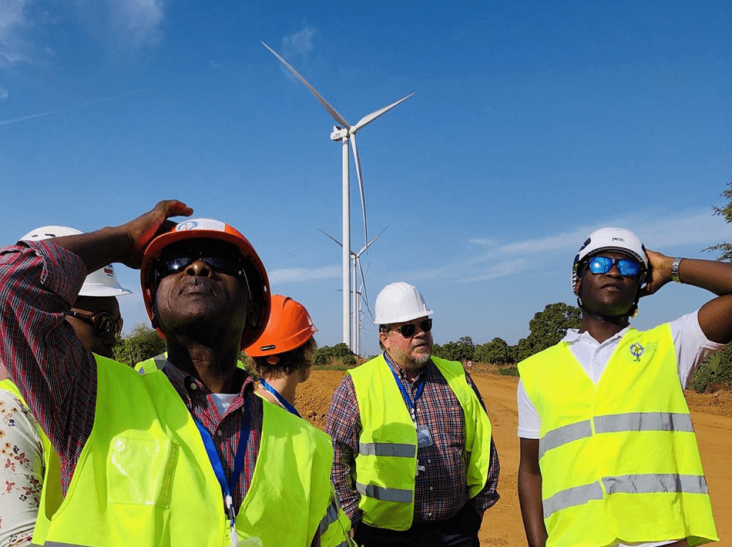- Where We Work
- Africa
- African Union
- Power Africa
- Trade and Investment
- Angola
- Benin
- Botswana
- Burkina Faso
- Burundi
- Cameroon
- Central Africa Regional
- Central African Republic
- Chad
- Côte d'Ivoire
- Democratic Republic of the Congo
- Djibouti
- East Africa Regional
- Eswatini
- Ethiopia
- Ghana
- Guinea
- Kenya
- Lesotho
- Liberia
- Madagascar
- Malawi
- Mali
- Mauritania
- Mozambique
- Namibia
- Niger
- Nigeria
- Republic of the Congo
- Rwanda
- Sahel Regional
- Senegal
- Sierra Leone
- Somalia
- South Africa
- South Sudan
- Southern Africa Regional
- Sudan
- Tanzania
- The Gambia
- Uganda
- West Africa Regional
- Zambia
- Zimbabwe
- Asia
- Europe and Eurasia
- Latin America and the Caribbean
- Middle East
- Mission Directory
Speeches Shim
Senegal
POWER AFRICA FACT SHEET
SENEGAL ENERGY SECTOR OVERVIEW
The Government of Senegal has made power sector development a key component of its Plan Sénégal Emergent, which aims to make Senegal an emerging economy by 2025. Priorities include lowering the cost of generation by reducing dependence on imported liquid fuels and increasing electricity access – particularly in rural areas. Senegal has significant potential to develop solar and wind power – as well as the opportunity to develop its offshore natural gas resources. The Government aims to achieve universal access by 2025 through a combination of on- and off-grid solutions, though the country’s rural concessions program faces significant hurdles.
GENERATION CAPACITY
- Installed Capacity: 864 MW
- Thermal: 733 MW
- Hydro: 60 MW
- Solar: 50 MW
- Reached Financial Close: 383 MW
- Power Africa 2030 Pipeline: 1,773 MW
CONNECTIONS
- Current Access Rate: 64%
- Rural: 43.5% Urban: 90%
- Households without Power: 1.1 million
- Target: Universal Access by 2025
- Power Africa New Connections to Date: 117,510
INVESTMENT AND ENABLING ENVIRONMENT
Biggest Issues
- Procurement processes
- Lack of a creditworthy utility
- Insufficient planning
Power Africa Interventions
- Building regulatory capacity
- Training and capacity building for Senegal’s utility
- Developing a gas sector master plan in collaboration with MCC and the Government of Senegal
POWER AFRICA’S ENGAGEMENT IN SENEGAL
MW GENERATION
Power Africa supports Senegal’s power sector through a diverse set of financial and technical assistance. The Overseas Private Investment Corporation (OPIC) has helped finance key transactions including the Taiba N’Diaye wind plant, the Senergy 1 solar PV plant and the Cap des Biches thermal facility. USAID provides continuous transaction advisory support to help private sector developers and other stakeholders identify and advance investment opportunities. USAID also provided technical assistance to prepare an updated generation and transmission Master Plan in collaboration with the Ministry of Energy, Senelec, and other key stakeholders.
CONNECTIONS
USAID is currently working with the Ministry of Energy to assess Senegal’s rural electrification efforts to date and identify recommendations to accelerate access gains. USAID also provides continuous transaction advisory assistance to private sector off-grid companies and rural concession holders, helping to strengthen business models and expand services.
SUCCESS STORY
With support from OPIC and USAID, several new power sector projects are already up and running in Senegal, including the Cap des Biches combined cycle thermal plant and the 29 MW Senergy 1 solar PV plant – currently the largest solar farm in West Africa. These projects are helping improve the availability and quality of power supply in Senegal.
Off-grid companies like Oolu Solar are lighting up rural areas of Senegal for the first time. Since gaining access to high-quality solar home systems, villagers in the Thies region cite improved safety and household savings – and look forward to ultimately scaling-up to off-grid televisions and refrigerators.
Senegal’s First Utility-Scale Wind Farm Provides Big Lift for Local Communities
Taiba N’Diaye is Senegal’s first utility-scale wind farm. Commissioned in December 2019, the initial phase of the project is already pumping 55 megawatts (MW) of renewable energy into the national grid, lighting up homes and businesses across the country. When fully completed by 2021, the wind farm will provide 158 MW of electricity to Senegal’s grid, or 15 percent of the country’s generation capacity. As an added bonus, the project developer, Lekela Power, plans to invest up to $20 million in community development efforts over the wind farm’s projected 20-year lifespan, which will be a big boost for those living near the project site.


Comment
Make a general inquiry or suggest an improvement.